The benefits of inclusive education for children with autism

Understanding the Importance of Inclusive Education for Autism
Inclusive education represents a fundamental human right and a strategic approach to supporting children with autism. By integrating students with autism into mainstream classrooms, educational systems promote diversity, empathy, and lifelong skills that benefit all learners. This article explores the extensive benefits of inclusive education, supported by research and practical strategies that enhance learning, social development, and emotional well-being for children with autism.
Core Benefits of Inclusive Education for Children with Autism
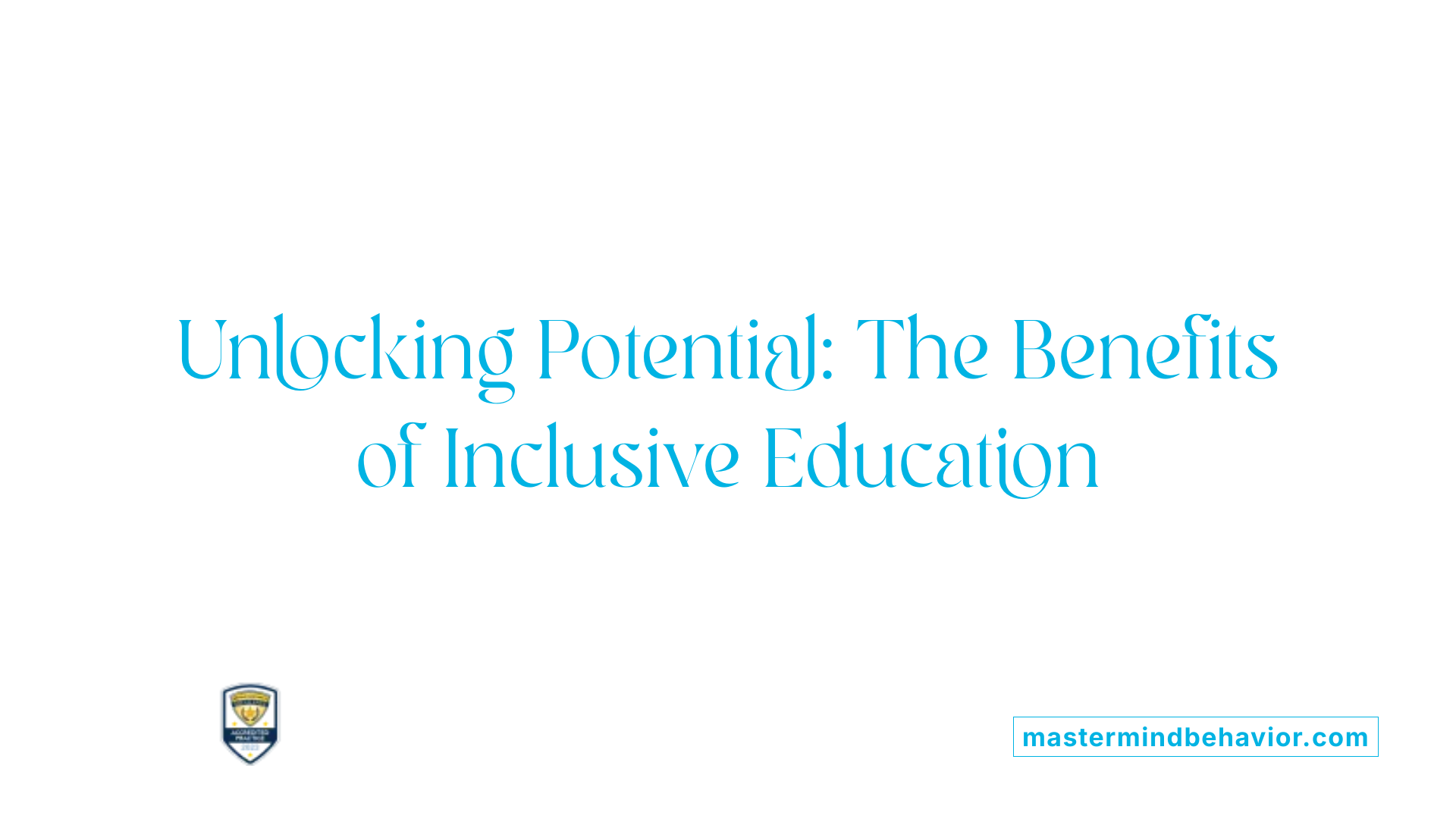
What are the benefits of inclusive education for children with autism?
Inclusive education offers many advantages for children on the autism spectrum. It helps develop essential social skills, including sharing, empathy, and initiating interactions. By learning alongside neurotypical peers, children with autism gain opportunities to practice communication in real-world contexts, which can improve their language abilities and social understanding.
Inclusion also promotes greater acceptance and reduces stigma. When children with autism are integrated into regular classrooms, their classmates often develop empathy and understanding, fostering a more accepting environment. This positive social climate encourages authentic friendships and enhances social integration.
Academically, inclusive settings support higher achievement as children with autism can learn through peer modeling and tailored instructional strategies like visual supports and differentiated lessons. These environments motivate students and build their confidence, leading to improved self-esteem.
Furthermore, inclusion nurtures emotional growth. Exposure to diverse peers and supportive relationships boosts self-confidence and helps children with autism develop resilience and a positive attitude towards school.
Successful inclusion depends on collaborative efforts, including proper teacher training, planning, and support systems like peer-mediated interventions. These strategies ensure individualized support, enabling children with autism to thrive academically and socially while promoting a culture of respect and diversity among all students.
Overall, inclusive classrooms prepare children with autism for lifelong social participation, independence, and a sense of belonging in various community settings.
Why Inclusion is Vital for Equitable Opportunities and Social Integration
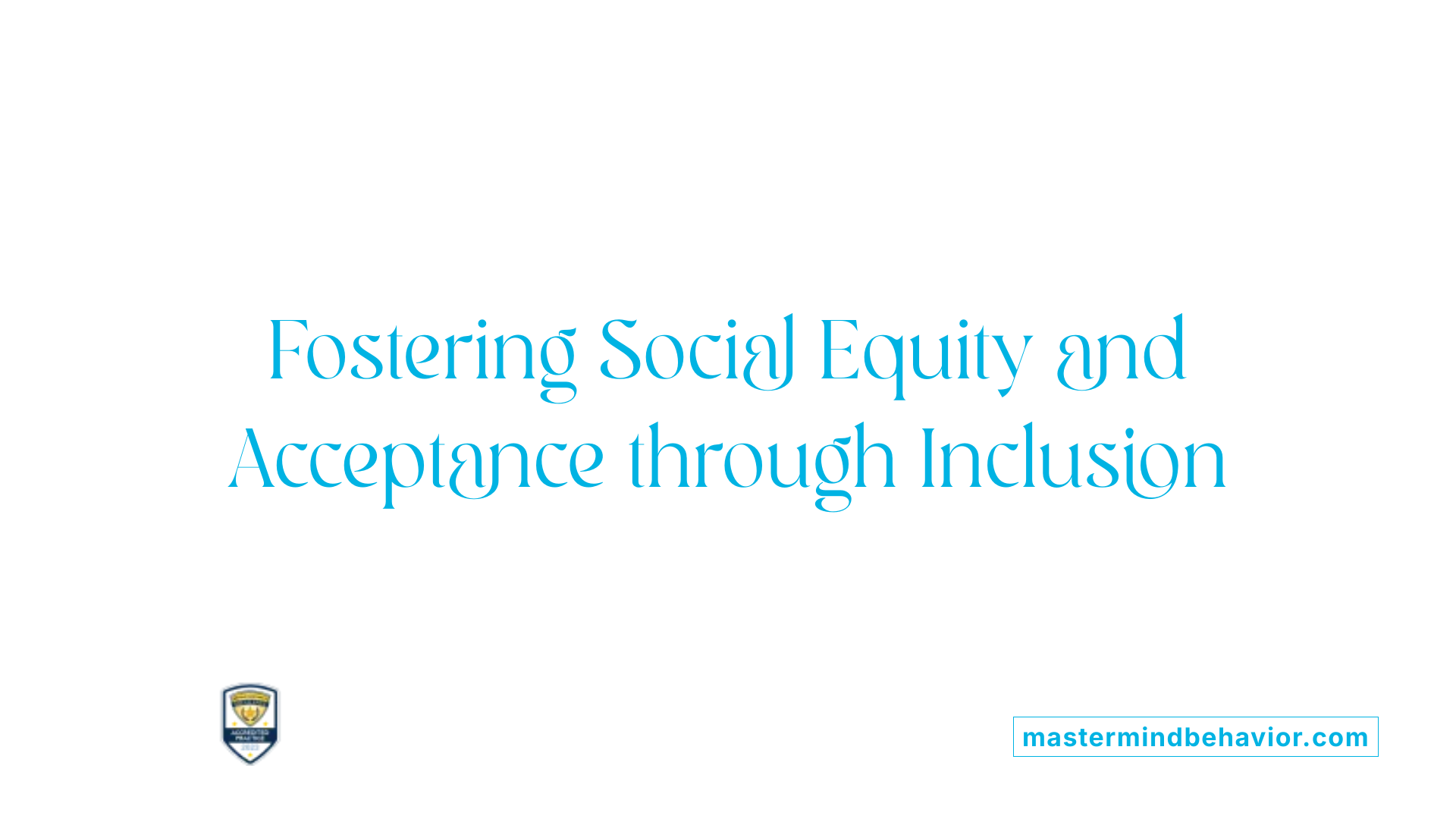
Why is inclusion important for children with autism?
Inclusion plays a vital role in providing children with autism access to learning activities and social participation. When children with autism learn alongside their neurotypical peers, they are more likely to develop essential social skills such as communication, sharing, and problem-solving. This environment encourages modeling of positive behaviors, which can boost confidence and help children with autism navigate social situations more effectively.
Inclusive classrooms help reduce stereotypes and biases by fostering daily interactions that promote understanding and acceptance. As children engage in shared activities, they learn to see beyond differences, recognizing individual strengths and abilities.
Broadly, inclusion promotes diversity and understanding, contributing to a school and community culture rooted in respect. It creates opportunities for children with autism to build authentic friendships, participate actively, and feel a sense of belonging. These experiences also positively influence the attitudes of their peers, cultivating empathy, patience, and appreciation for human diversity.
Supporting inclusion involves thoughtful planning, including individualized supports like visual aids, structured routines, and sensory tools to meet each child's unique needs. Teachers’ positive outlook, along with proper training and differentiated instruction, ensures that children with autism are supported effectively.
Ultimately, inclusion not only benefits children with autism but enriches the entire community by fostering social equity, promoting acceptance, and preparing all students for a diverse and interconnected world.
Defining Inclusive Education for Children with Autism
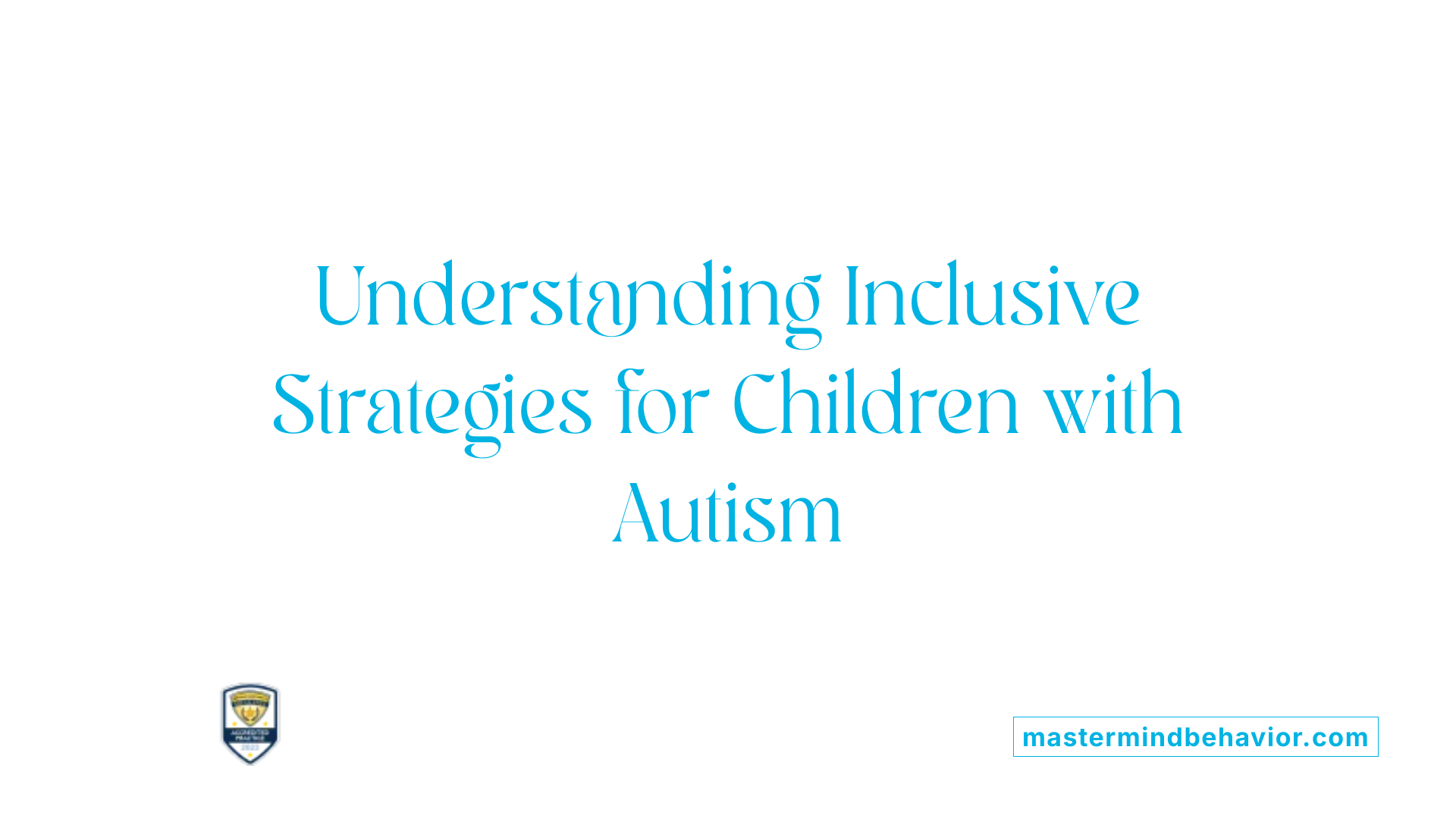
What is inclusive education for autistic children?
Inclusive education for autistic children involves integrating them into mainstream classrooms where they can learn alongside their peers. This approach promotes social skills, understanding, and acceptance for all students, fostering a nurturing learning environment.
To support students with autism effectively, visual supports such as schedules, picture cards, and choice boards are commonly used. These tools help children grasp daily routines, reduce anxiety, and encourage independence by making expectations clear and predictable.
Implementation of tailored instructional strategies is vital. Clear, concrete language assists children with autism in understanding instructions and tasks. Incorporating positive reinforcement, praise, and reward systems motivates students and reinforces desired behaviors.
Sensory-friendly spaces and tools are also essential. They help students manage sensory overload and maintain focus by providing calming environments and sensory breaks when needed.
Collaborative teamwork among teachers, special education professionals, and families ensures consistency in applying these strategies. Evidence-based programs like the Incredible Years Teacher Autism program and TEACCH Structured Teaching focus on individualized support that increases engagement, independence, and appropriate behavior.
Creating an accessible learning environment involves more than physical adaptations. It requires understanding each child's unique needs and sensitivities, planning lessons accordingly, and fostering positive peer interactions. Group activities, buddy systems, and social skills training promote social inclusion and modeling of positive behaviors.
In summary, inclusive education for children with autism uses a combination of visual supports, personalized strategies, collaboration, and environmental adaptations to support their academic, social, and emotional development. This comprehensive approach not only benefits children with autism but also enriches the learning experience for all students, promoting a diverse and accepting school community.
The Role of Peer Interactions in Promoting Social Success
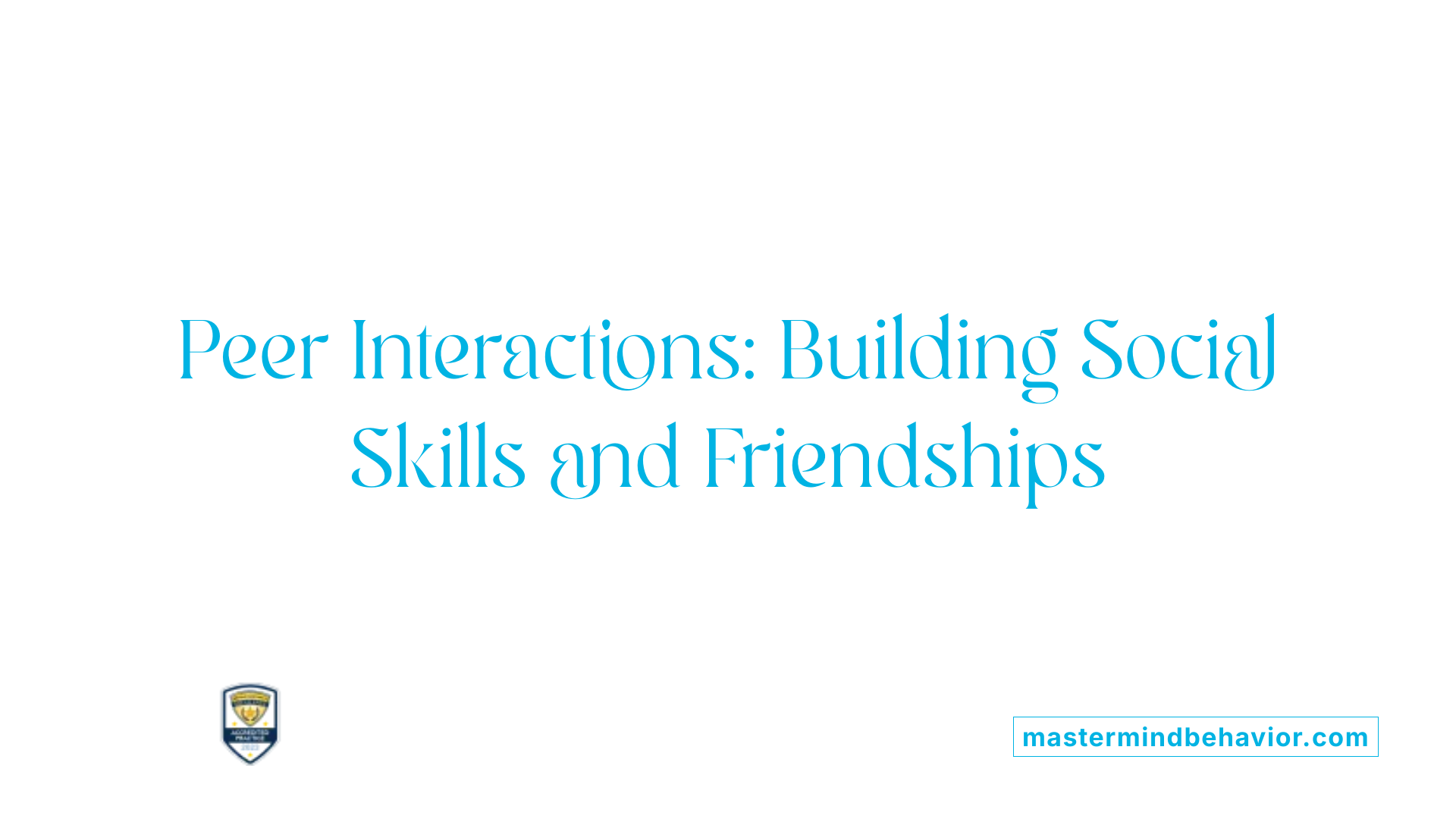
How do peer interactions and social inclusion promote positive outcomes for children with autism?
Peer interactions and social inclusion are vital for supporting children with autism. They offer countless chances for children to observe, imitate, and practice important social skills such as sharing, taking turns, and expressing emotions.
When children with autism engage with their peers, they often become more motivated and interested in communication. This interaction helps them develop better social skills and fosters meaningful friendships, which are essential for a sense of belonging and emotional well-being.
Inclusive environments and structured social programs play a significant role in encouraging social growth. These settings help reduce feelings of anxiety and loneliness often experienced by children with autism.
One effective approach is peer-mediated interventions. In these models, typically developing peers are trained to support their classmates with autism. Such interventions boost social competence, increase acceptance, and improve motivation for social interaction.
Overall, promoting social inclusion through peer interactions helps children with autism to develop better communication skills, build confidence, and create lasting relationships. These experiences contribute greatly to their social, emotional, and behavioral development, preparing them for more integrated social participation in the future.
Effective Strategies for Supporting Children with Autism in Inclusive Settings
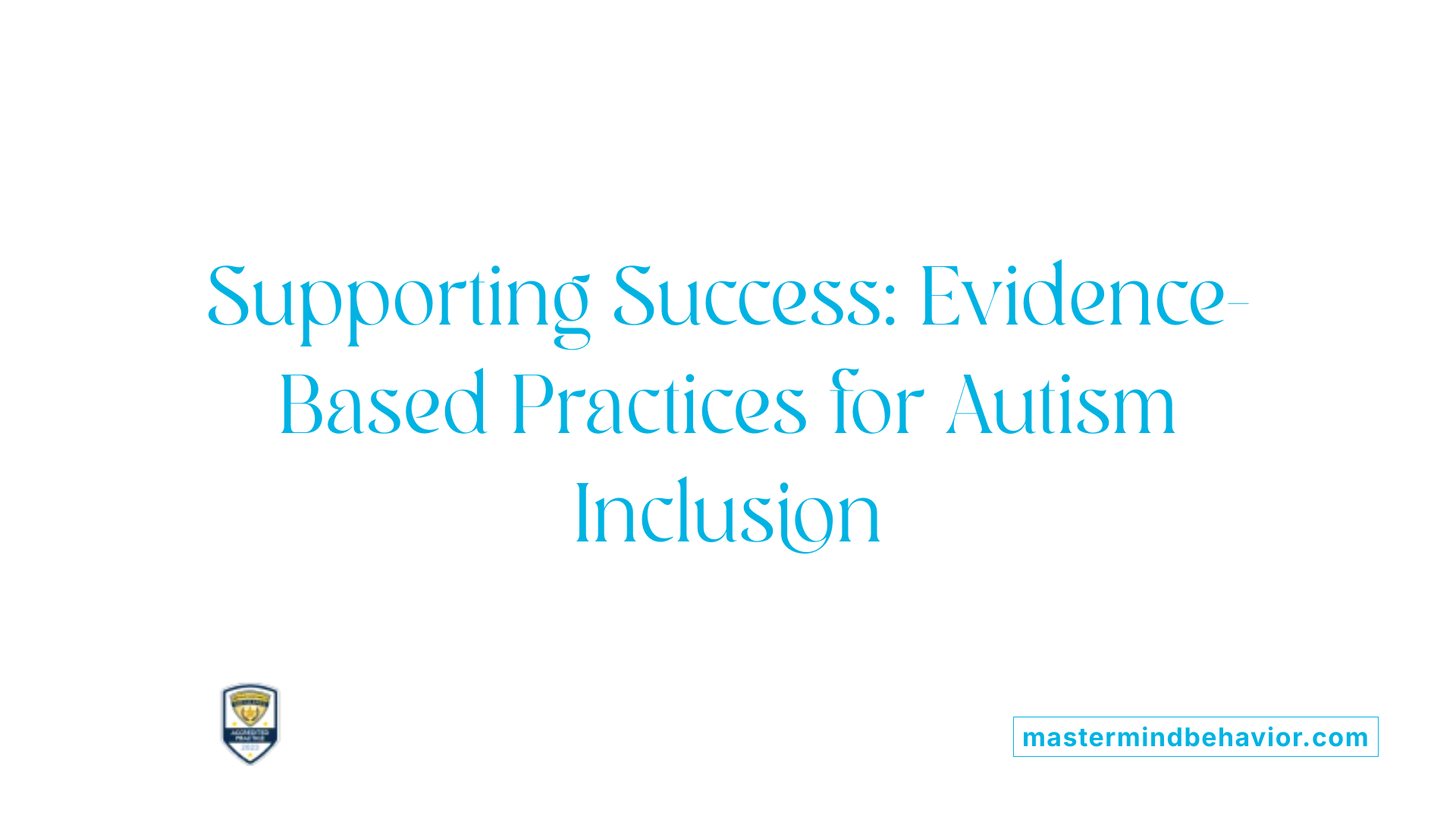
What strategies and practices facilitate successful inclusive education for children with autism?
Supporting children with autism successfully in inclusive classrooms requires a combination of evidence-based practices and personalized approaches. Visual supports such as pictures, diagrams, and scheduled routines help children understand daily activities and expectations, reducing anxiety and promoting independence.
Positive reinforcement techniques, including praise and reward systems, motivate desired behaviors and build confidence.
Structured routines and clear, predictable schedules help children with autism manage transitions and changes more easily, creating a sense of stability and safety.
Sensory accommodations, like quiet spaces and sensory tools, assist students in regulating their sensory input and maintaining focus during lessons.
Professional development plays a vital role. Ongoing training ensures teachers are familiar with autism-specific strategies, cultural competence, and how to adapt environments effectively.
Involving families and the community is essential for creating a consistent support network. Collaboration among teachers, parents, and support staff ensures that instructional and behavioral strategies align with each child's needs.
Utilizing frameworks like Universal Design for Learning (UDL) helps make lessons accessible for all students, fostering engagement and participation.
Data collection and continuous assessment allow educators to monitor progress, adjust supports, and ensure fidelity in applying essential practices.
Overall, an individualized, flexible approach that incorporates visual supports, positive reinforcement, structured routines, sensory spaces, professional training, and family involvement significantly enhances learning outcomes for children with autism in inclusive settings.
Overcoming Challenges in Inclusive Education for Autism
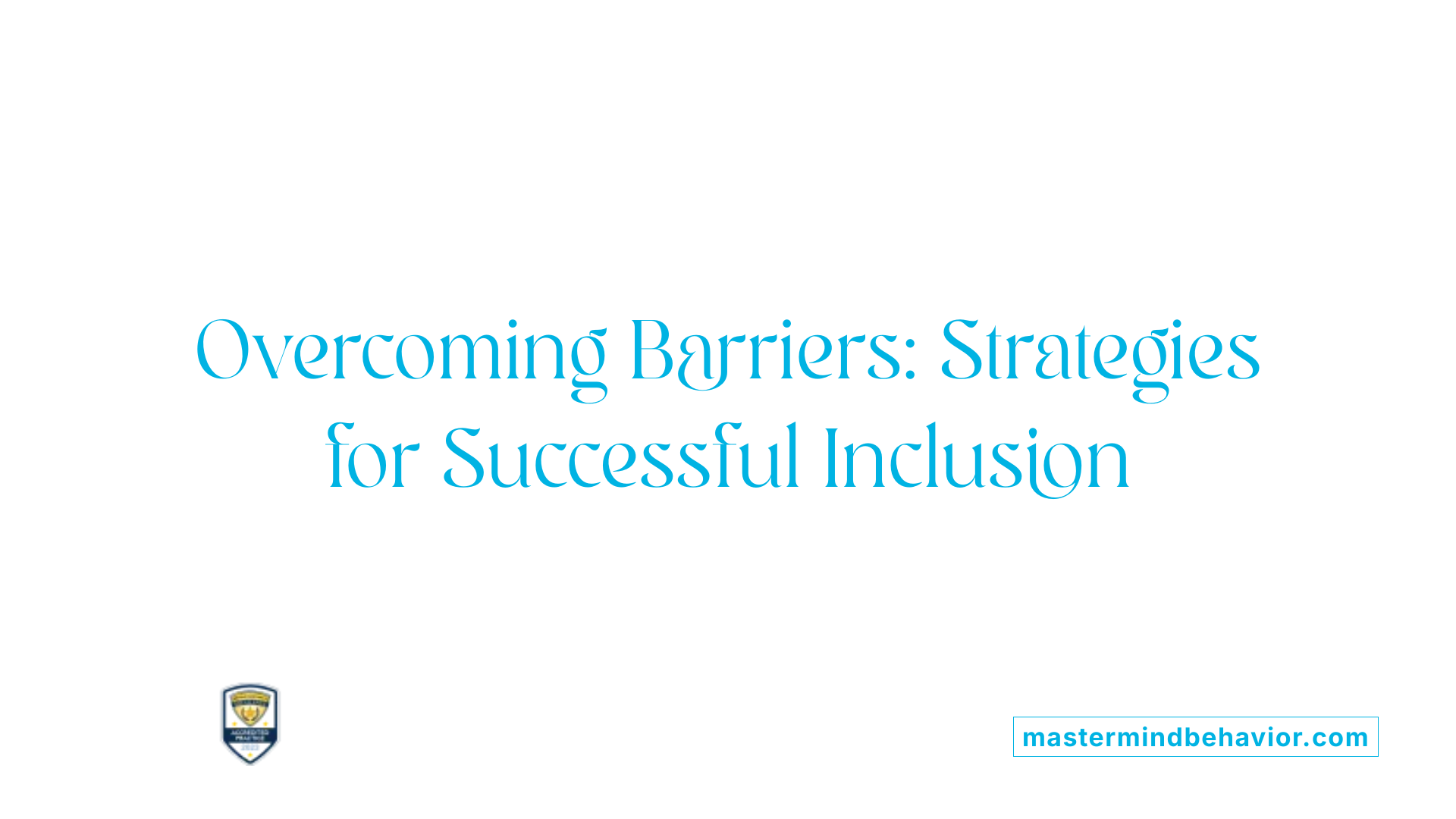
What are the main challenges in educating children with autism in inclusive settings?
Implementing effective inclusive education for children with autism involves navigating several obstacles that often require strategic planning and dedicated resources.
One of the core issues is managing diverse sensory and behavioral needs. Children with autism may be sensitive to noise, light, or textures, which can lead to sensory overload. To address this, schools need to create sensory-friendly spaces and modify the environment. Visual supports like pictures and diagrams, along with structured routines, can help children understand expectations and reduce anxiety.
Another challenge is teacher preparedness. Many educators feel untrained or underprepared to teach students with autism. Ongoing professional development focused on evidence-based teaching strategies such as positive reinforcement, differentiated instruction, and social skills training is crucial. Proper training enables teachers to better support behavioral and communication needs, making inclusion more successful.
Social integration can also be difficult. Children with autism may struggle to form friendships or navigate peer interactions. Promoting social skills through group activities, buddy systems, and peer-mediated interventions can foster acceptance. Encouraging positive peer interactions not only supports autistic students but also teaches neurotypical peers empathy and respect.
Furthermore, it’s important to adapt resources and learning environments. This includes using assistive technology, providing visual supports, and adjusting activities to meet individual student needs. Collaboration between teachers, support staff, families, and specialists ensures that each child's plan includes necessary accommodations.
Lastly, addressing behavioral challenges such as meltdowns or communication difficulties requires comprehensive behavioral strategies and support. Consistent use of reinforcement, predictable routines, and clear, concrete language help manage behaviors and increase engagement.
Overall, overcoming these challenges involves a combination of environmental adjustments, staff training, social development programs, and collaborative planning. When schools commit to flexible, inclusive practices and resources, children with autism can thrive academically, socially, and emotionally in supportive inclusive classrooms.
Building a Future of Inclusivity and Empowerment
Inclusion is more than a policy; it is a transformative approach that fosters respect, understanding, and opportunities for children with autism. By investing in well-trained educators, implementing practical strategies, and cultivating an environment inclusive of diversity, schools can unlock the full potential of every student. The journey toward inclusive education requires ongoing collaboration, resilience, and a shared commitment to human rights. The positive outcomes—ranging from social acceptance to academic achievement—benefit not just children with autism but the entire community, paving the way for a more equitable and compassionate society.
References
- [PDF] REFEREED ARTICLE The Benefits of Inclusion for Students on the ...
- Benefits of An Inclusive Classroom for Both Neurotypical Children ...
- Effective Classroom Strategies for Teaching Students with Autism
- [PDF] Successful Inclusion of Students with Autism Spectrum Disorder
- INCLUSIVE EDUCATION FOR STUDENTS WITH AUTISM ...
- Inclusion: Ensuring access for everyone - Autism Speaks
- Increasing engagement in students with autism in inclusion ...
- Inclusion Vs. Self-Contained Education for Children on the Autism ...
- Attitudes Toward Inclusion and Benefits Perceived by Families in ...
Recent articles

ABA Therapy For Building Self-Regulation And Coping Skills
Harnessing ABA Therapy to Empower Emotional and Behavioral Mastery in Autism

ABA Therapy For Building Skills In Independent Decision Making
Empowering Autistic Individuals Through ABA: A Pathway to Autonomy

Collaborative Communication Between Therapists and Families
Building Bridges: The Essential Role of Collaboration in Autism Therapy

How ABA Helps Develop Adaptive Behavior Skills Over Time
Unlocking Independence: The Role of ABA in Building Adaptive Skills

The Role of Parent Priorities in Designing ABA Goals
Collaborative Goal-Setting: Aligning ABA Therapy with Family Priorities

Translating ABA Goals into Everyday Functional Skills
Bridging Theory and Practice: How ABA Therapy Enhances Daily Life for Individuals with Autism



